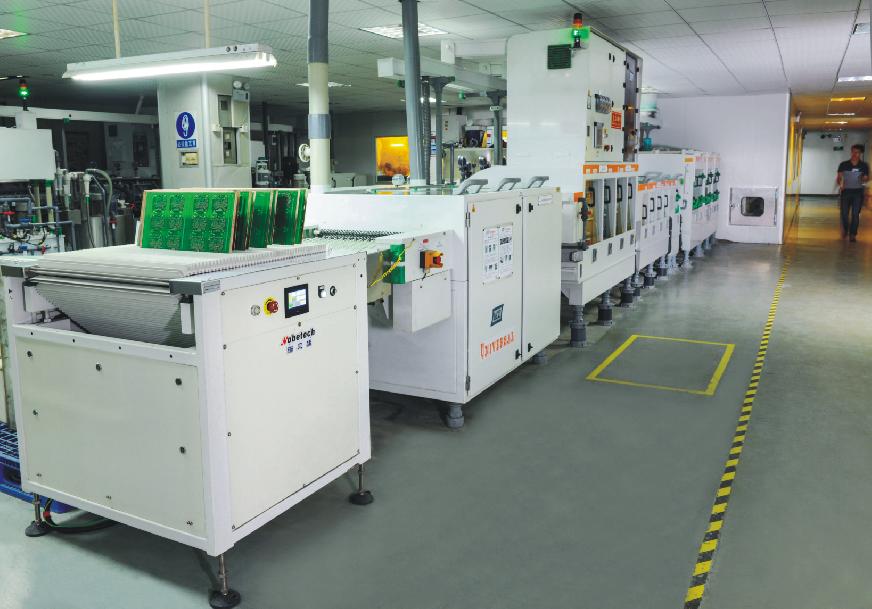Shenzhen Bicheng Electronics Technology Co., Ltd |
|
2 Layer Flexible Printed Circuit (FPC) Built on Polyimide With Stiffener for Door Access System
(Flexible printed circuits are custom-made products, the picture and parameters shown are just for reference)
General description
This is a type of 2 Layer flexible printed circuit (FPC) built on polyimide for the application of Door Access System.
Basic specifications
Base material: Polyimide 12.5μm + 0.2mm polyimide stiffener
Layer count: 2 layers
Type: Individual FPC
Format: 129mm x 77.3mm = 1 type = 1 piece
Surface finish: Immersion gold
Copper weight: Outer layer 35 μm/ Inner layer 0 μm
Solder mask / Legend: Yellow coverlay / No.
Final PCB height: 0.15 mm
Standard: IPC 6012 Class 2
Packing: 100 pieces are packed for shipment.
Lead time: 10 working days
Shelf life: 6 months

Features and benefits
Consistency of assembly;
Reliability increased;
Controllability of electrical parameter design;
Small quantity order is accepted;
12 hours quotation;
16000 square meter workshop;
30000 square meter month capability;
8000 types of PCB's per month;
Applications
LCD module, POS antenna soft board, medical equipment controller, automobile GPS navigation flex board, Touch screen, LCD TV soft board, Digital camera soft board
General Properties of 2 Layer FCCL
| Double side adhesiveless flexible copper clad laminate (SF202) | ||||||
| Test Item | Treatment Condition | Unit | Property Date | |||
| IPC Standard * value | Typical Value | |||||
| SF202 0512DT | SF202 1012DT | |||||
| Peel Strength (90º) | A | N/mm | ≥0.525 | 1.2 | 1.4 | |
| 288℃, 5s | ≥0.525 | 1.2 | 1.4 | |||
| Folding Endurance (MIT) | R0.8 X 4.9N | Times | - | >80 | >50 | |
| Thermal Stress | 288℃, 20s | - | - | No delamination | No delamination | |
| Dimensional Stability | MD | E-0.5/150 | % | ±0.2 | ±0.05 | ±0.05 |
| TD | ±0.05 | ±0.05 | ||||
| Chemical Resistance | After Chemical Exposure | % | ≥80 | >85 | >85 | |
| Dielectric Constant (1MHz) | C-24/23/50 | - | ≤4.0 | 3.2 | 3.3 | |
| Dissipation Factor (1MHz) | C-24/23/50 | - | ≤0.01 | 0.007 | 0.008 | |
| Volume Resistvitiy | C-96/35/90 | MΩ-cm | ≥10^6 | 4.5 x 10^8 | 3.5 x 10^8 | |
| Surface Resistance | C-96/35/90 | MΩ | ≥10^5 | 1.5 x 10^6 | 2.0 x 10^6 | |
Clarifications of FPC
According to the combination of base material and copper foil, flexible circuit board can be divided into two types: flexible board with adhesive and flexible board without adhesive. The price of non-adhesive flexible PCB is much higher than that of adhesive flexible PCB, but its flexibility, bonding force between copper foil and substrate and flatness of solder are also better than that of adhesive flexible PCB. So it is only used in the high demand situations, such as the: COF (CHIP ON FLEX, flexible board with bare chip, the high flatness of the pad) and so on. Because its price is high, most of the flexible PCBs used in the market are still adhesive flexible circuit board. Because the flexible circuit board is mainly used in the situation where bending is required, if the design or process is not reasonable, it is easy to produce micro-cracks, welding and other defects.
Economy of using FPC
If the circuit design is relatively simple, the total volume is small, and the space is suitable, the traditional internal connection is much cheaper. Flexible circuits are a good design option if the circuit is complex, processes many signals or has special electrical or mechanical requirements. When the size and performance of applications exceed the capacity of rigid circuits, flexible assembly is the most economical. A 12mil pad with a 5mil through hole and a flexible circuit with 3mil lines and spacing can be fabricated on a thin film. Therefore, it is more reliable to mount the chip directly on the film. There is no flame retardant that could be an ion source. These films may be protective and solidified at higher temperatures to obtain higher glass transition temperatures. Flexible materials are less costly than rigid materials because they are free of connectors.

